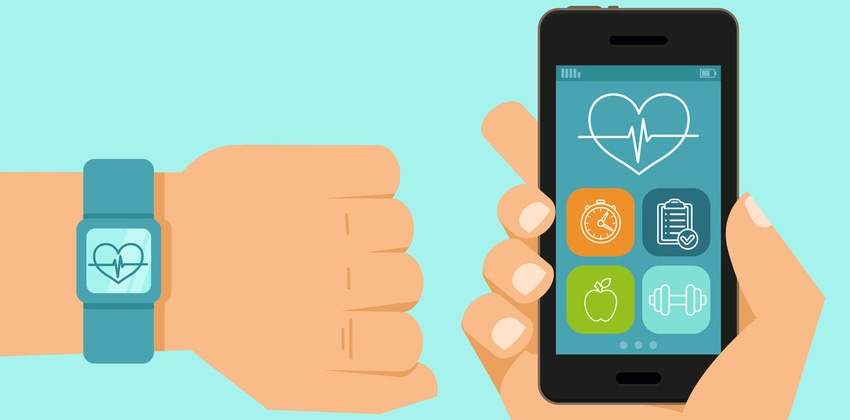In what’s been coined the year of wearable technology, the provision of empowering and intuitive monitoring is something that will increasingly play a part in both our lives and the lives of our loved ones.
May 28, 2015

Telecoms.com periodically invites expert third-party contributors to submit analysis on a key topic affecting the telco industry. In this article Dean Anthony Gratton explores the concept of ‘careables’ – IoT applications that assist with health monitoring.
Dear sweet Edna. She’s 84 years young, independently-driven and with an amazingly sound mind. She’s determined, and crikey, she bakes the most delicious cakes – forget your Fitzbillies (Cambridge, UK), Edna’s carrot cake always assures her of a daily visitor or two gracing her doorstep.
It’s all too easy to forego the stereotypical images you inevitably conjure up of a retired English teacher, living on her own. Some have described Edna, as a confident woman who enjoys living her life on her own terms and having the freedom to potter around her idyllic one-bedroom cottage in the centre of Cambridge. Edna’s steady visitors to her home on Newnham Road, always assure her of her independence and reaffirm her undying belief that old age hasn’t robbed her of her dignity.
When my wife and I approach her front door, she welcomes us with the warmest of smiles, as she gestures with an extended arm for us to greet her with respective pecks on the cheek, “Take a seat; I won’t be a moment”, she says, as she confidently disappears into her kitchen. Moments later she appears, holding a large tray of crockery, cakes and coffee – I inevitably panic and rush to her aid, but she insists – “I have this, sit down and stop worrying” – it seems to be her mantra and the wife and I glance at each other in wonder.
Independence with Assistive Technology
Edna’s confidence and sense of independence is aided by Assistive Technology (AT) – a broad definition, which bestows its adopters the unique ability to live within a sphere of supportive technology-focused products, enabling them to remain autonomous for as long as possible. In Edna’s case it’s her Buddy as she calls it, or ‘Buddi’ (buddi.co.uk) to be more correct. At first glance it looks like an Apple Watch Sport band – Edna is sporting the vibrant lilac one on her left wrist, “It goes with my cardigan” she remarks proudly. The winner of the British Healthcare Awards 2014, the Buddi calls for help at the touch of a button, enabling a 24-hour monitoring service to talk to you through your Buddi, track your location and notify your emergency services and next of kin.
From Wearables to Careables
In what’s been coined the year of wearable technology, the provision of empowering and intuitive monitoring is something that will increasingly play a part in both our lives and the lives of our loved ones. There is an ever growing need to improve healthcare levels across the nation, and the world for that matter, and wearable technology is becoming intelligent enough to establish the kind of assistance that’s required. From monitoring the wearer’s activity levels in the day to setting expected activity levels as a benchmark, careable devices will be able to detect and report any noticeable change, while providing an instantly accessible stream of data to medical services when needed.
Achieving a Balance
As with any technological intervention, it’s important to sustain the balance of ‘real vs virtual’ and, whilst devices like the Buddi are powerful allies of independent living, we mustn’t forget to include the all-important human side of care. There are some things that technology just can’t detect yet, such as those moments of self-doubt that come when we realise our bodies can’t perform as they used to. Some see the new dawn of elderly homecare monitoring as isolating and, in this respect, I can see their point.
In Edna’s case however, her regular flow of visitors ensure that her home is never empty for long and that those dark clouds of self-doubt and insecurity are quickly dispersed by time spent with family and friends. In many cases, the pros certainly outweigh the cons and careable technology is moving forward at a brisk pace, providing even greater freedom of choice through applications such as heat monitors and automatic temperature settings and visual and audible medication reminders provided by wrist worn wearables that can also reorder prescriptions ready for delivery and can even alert the wearer to who’s at the door.
Standards and Simplicity
Other examples of Telecare include applications such, as smoke, movement, fall, window and door sensors all participating in supporting the well-being of the infirm and elderly. Most of these technologies utilise some kind of short-range RF or fixed technology, whether it’s Bluetooth wireless or the European Social Alarm Frequency (ESAF) standard operating at 169 or 869MHz. Using this standardised frequency reduces the likelihood of other radio frequencies interfering with life-critical equipment.
But with all these advances, Telecare and its associated Internet of Things (IoT) technology doesn’t need to be overcomplicated. Indeed it has to be simple to avoid complexity, confusion and misunderstanding from the user – Edna doesn’t want to be overwhelmed by a system that she needs training to understand. Put simply, she needs to be assured that she can confidently rely on a technology that provides her with 24-hour support.
A Final Thought
As I’ve already touched upon, balance is key and for those like Edna, the opportunity to stay in their own homes, guardedly independent and yet with contact from existing family and social networks, the gift given by this ever-evolving careable technology is absolutely priceless. And I’d like to leave you with one final thought: that of Edna and her rooted independence; feeling for just a moment, in need of support and reassurance, that she ‘still has what it takes’. Let’s just forget for a moment the wireless endeavours behind the miracle and instead celebrate that, in that moment of contact all be it virtual, she hears the voice of an angel.
Until next time…
I plan to take a look at the IoT in the ‘Connected Car’ context, which is another popular notion that’s been bounced around for a while. So, this is where a driven Dr G signs off.
 Dr Dean Anthony Gratton is a bestselling author and columnist, and has worked extensively within the wireless communications R&D industry. His wireless research work has been patented. You can contact Dean at [email protected] and follow him on Twitter (@grattonboy) to enjoy his risqué humour, witty shenanigans, social media and technology-related tweets. You can also read more about his work at deangratton.com.
Dr Dean Anthony Gratton is a bestselling author and columnist, and has worked extensively within the wireless communications R&D industry. His wireless research work has been patented. You can contact Dean at [email protected] and follow him on Twitter (@grattonboy) to enjoy his risqué humour, witty shenanigans, social media and technology-related tweets. You can also read more about his work at deangratton.com.
Read more about:
DiscussionAbout the Author(s)
You May Also Like








.png?width=300&auto=webp&quality=80&disable=upscale)


_1.jpg?width=300&auto=webp&quality=80&disable=upscale)


.png?width=800&auto=webp&quality=80&disable=upscale)